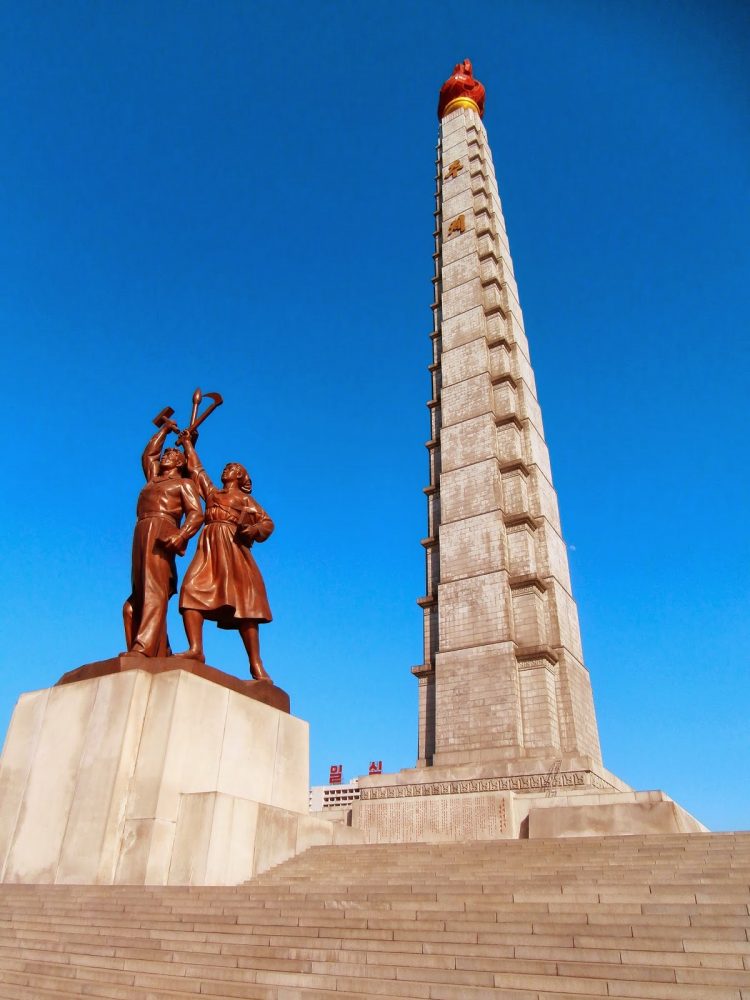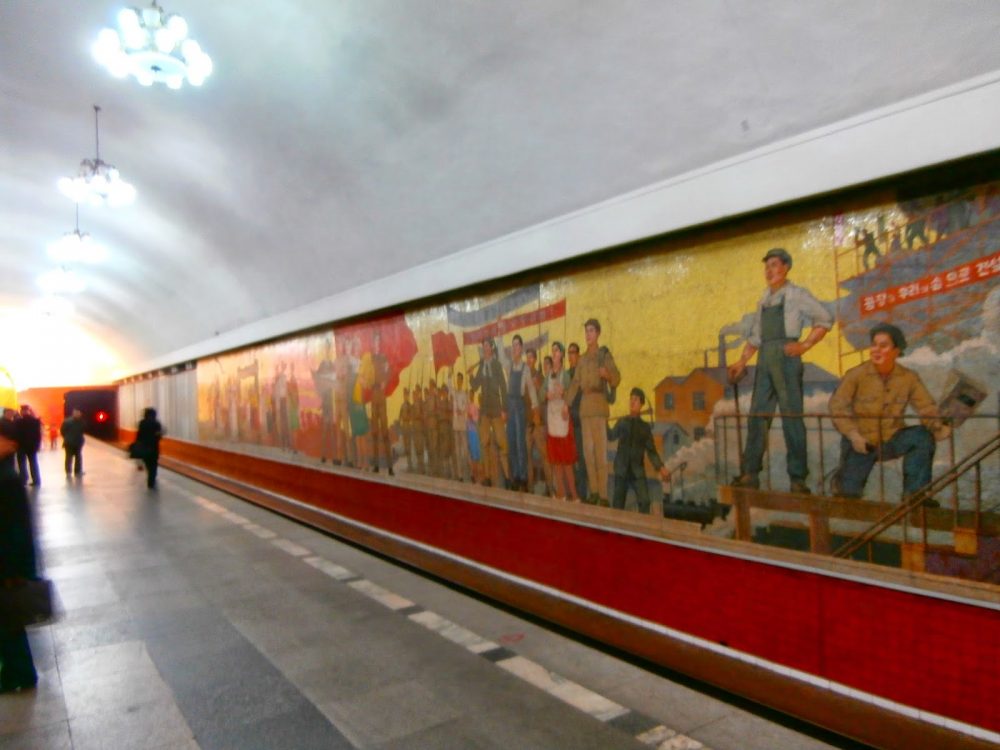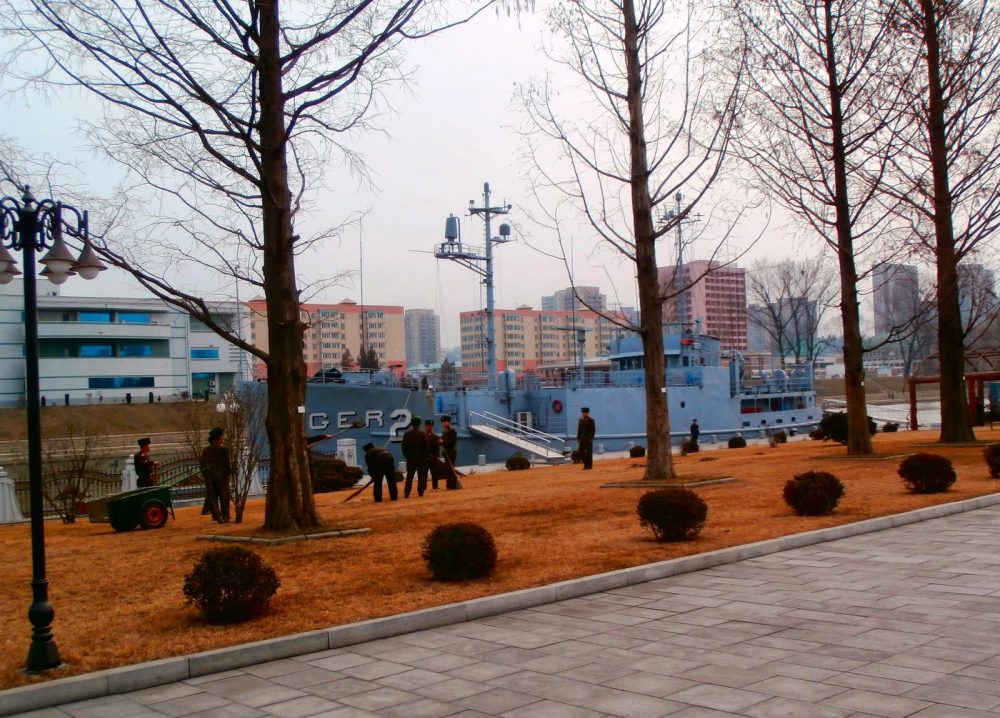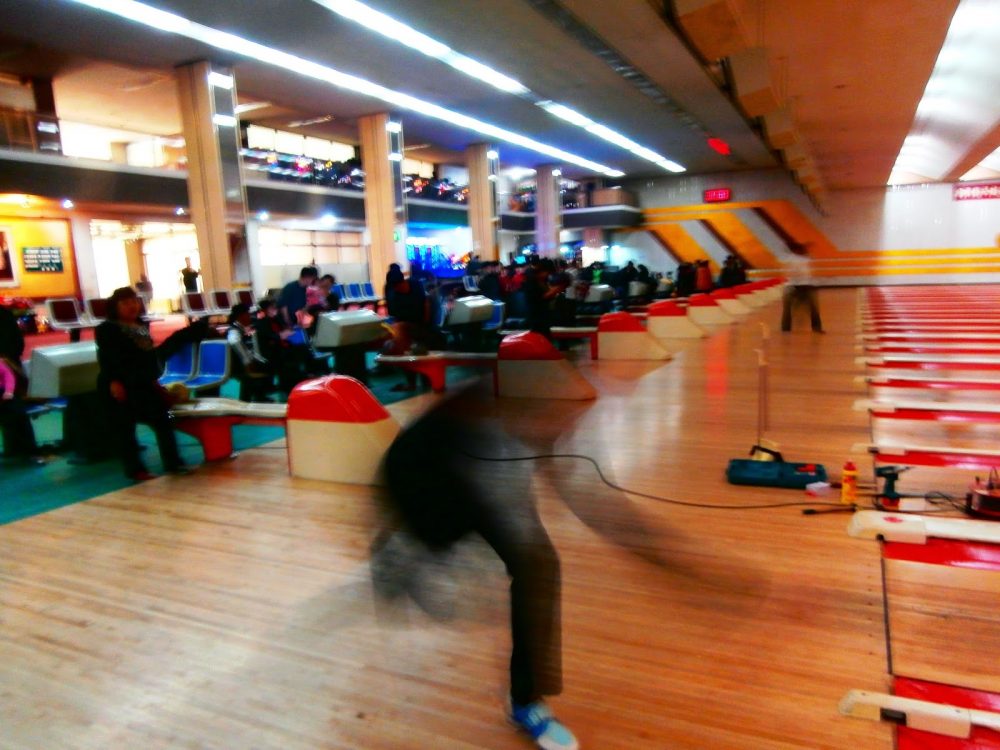Monumental Pyongyang, the weird capital of the DPRK
Monumental Pyongyang!
It is no understatement to remark that Pyongyang wins hands-down in any contest involving size, number, variety and overwhelming number of monuments; they are counted by the dozen, and each has a remarkable symmetry and attention to numerical detail that starts as interesting and transmogrifies into the soporific.
The sheer scope of the DPRK’s adulation of their leaders, pride in their immediate and ancient past, and vision of the future is simply prodigious, and we went to see them all.

Some, it must be said, were extremely interesting. In fact they were all interesting in their own way, but wandering from one 20 metre-tall bronze statue after another lost its allure. At first, however, we were bright-eyed and attentive students, and trekked off to the majestic Mansudae Grand Monument.
This depiction of the Eternal President and Eternal General Secretary smiling benignly over the city, flanked by two massive reliefs depicting the heroism of the country’s soldiers in both the war against the Japanese and the war against the Americans is a fantastic introduction to the psyche of the country.
We arrived at the site, and purchased flowers (€4 per bunch) which we placed at the feet of the Great Leaders before solemnly bowing in front of the statues to show our respect. I don’t bow often, but I think I managed an acceptable angle of obeisance, and then proceeded to wander around.
There were groups of locals around, and this was to be a constant factor of our sightseeing. Parties of workers making pilgrimages to the city to see the sights and have their revolutionary spirit rejuvenated.
Now I don’t want to sound as if I am mocking, because I am not. The entire country works on a delicate balance of sincere belief, a complete suspension of credulity, an almost complete and permanent news blackout and an ingrained wariness of outsiders; that, and the absolute certainty that the USA is permanently quaking in their boots with the fear that the DPRK may annihilate them when they are not looking.
So off we went. Next to the Juche Tower, the 150 metre tall monument to the “Juche Idea”, the philosophy of self-reliance that forms the backbone of their political belief. I have bought a book about the ideology, and intend to plough through, but I have to say that it is pretty heavy going. The tower itself is quite magnificent, and sports a rather dashing naugha-flame at the top. (€5 for the ride in the lift to the top).


Then, as our schedule never paused for breath, it was down to the centre of the earth, and a visit to the Pyongyang metro, the deepest such system in the world. It is very impressive, if a touch rattly, and capable of carry tens of thousands of passengers per day. Our destination was the local triumphal arch (much like every other arch of this genre), and finally lunch.

Food throughout the trip was good; clearly not the food that nourishes the local population, but food put on to satisfy their visitors, and satisfy us it did. A usual meal comprised of half a dozen “side dishes” of various salads, a little fish and/or duck, and then a soup with rice. Filling, healthy, universally tasty and sufficient to set us up for an afternoon’s worth of monuments, parade squares and a Viennese coffee house.
The afternoon was taken up with a visit to the Victorious Fatherland Liberation War Museum, which is truly a sight to behold. The war with the Americans (not, it must be noted the United Nations), is central to the direction of all. The fighting was brutal and continued for years, and much of the territory of what is not the DPRK was obliterated. Pyongyang itself, previously a city of some importance and a population of 40,000 was destroyed by the roughly 40,000 bombs that rained down on it. It is certainly a marvel on reconstruction that the city has risen in a period of economic stranglehold and almost permanent isolation and embargo.


However, the museum is terrific. At its heart is the USS Pueblo, the spy-ship that was captured by the Korean navy. They are terribly proud of this naval success, and to this day, the ship lies freshly painted and moored on the banks of the Taedong River. One can wander through it and marvel at the technology of the 1960s that looks so totally out of place today, but to the local population it symbolises their parity with the ever-vigilant enemy, the United States of America.

And then bowling, a logical way to wind up a day in a Parallel Universe; two games at the Golden Lane Bowling Centre proved to be a perfect antidote to the history lessons that we had enjoyed all day, and a fine way to see the local Koreans at play.

